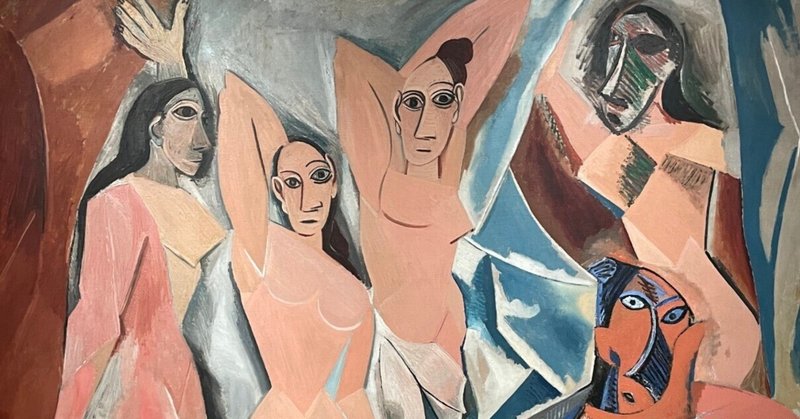
パブロ・ピカソ(Pablo Picasso)作『アヴィニョンの娘たち(Les Demoiselles d'Avignon)』

『MOMA Now』
This work is as uncomfortable to look at as it is impossible to look away from. No other painting is the history of Western art so boldly, and badly, confronts the viewer. Three of the five naked protagonists stare outward, trapping us with their gazes, just as the picture's complicated space, populated by bodies that simultaneously press against and recede from its surface, draws us in. Pictorial conventions are banished and idealized notions of beauty jettisoned. The two rightmost figures' masklike features are often connected to Picasso's visit, midway through his work on the painting, to the Musee d'Ethnographie du Trocadero in Paris ― the city's first anthropological museum. There he had an epiphanic encounter with African and Oceanic art, which influenced the work's ferocious antinaturalism ― the degree to which the depicted figures resist mimetic norms.
Picasso produced an unprecedented quantity of preparatory drawings and paintings for Demoiselles. They speak to his struggle to reinvent Western painting in his own stylistically disjunctive, spatially contradictory, aggressively confrontational terms. The title Les Demoiselles d'Avignon (The women of Avignon) was given to the work around the time of its first public exhibition. It alludes to the prostitutes of Barcelona's red-light district and foregrounds the psychosexual dimension and erotic content that conjoin with Demoiselles's explosive form and fuel its continued ability to shock.
美術館のキャプション
Picasso made this monumental painting over an intensive six-month period, beginning with hundreds of preparatory paintings and drawings. The artist chose as his subject five sex workers of Avignon Street, a red-light district in Barcelona. The women ― whose bodies are composed of angular lines and splintered planes ― fill a cramped, curtained space and surround a fruit still life. The two figures at right have masklike features thought to be inspired by African and Oceanic art Picasso encountered at the Musee d'Ethnographie du Trocadero in Paris, whose collection featured objects plundered from French colonies.
この記事が気に入ったらサポートをしてみませんか?
